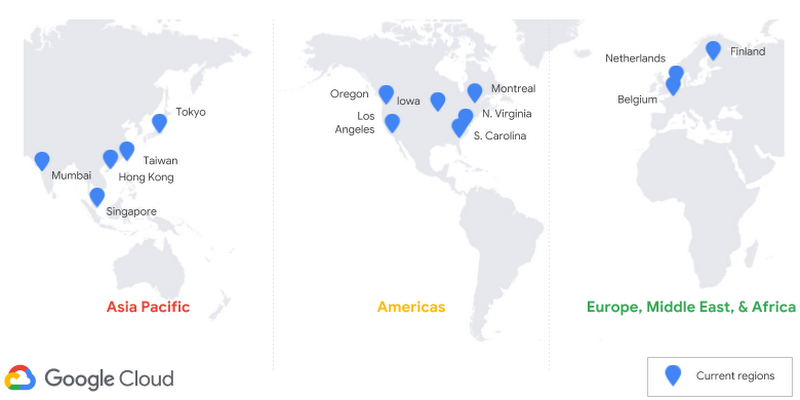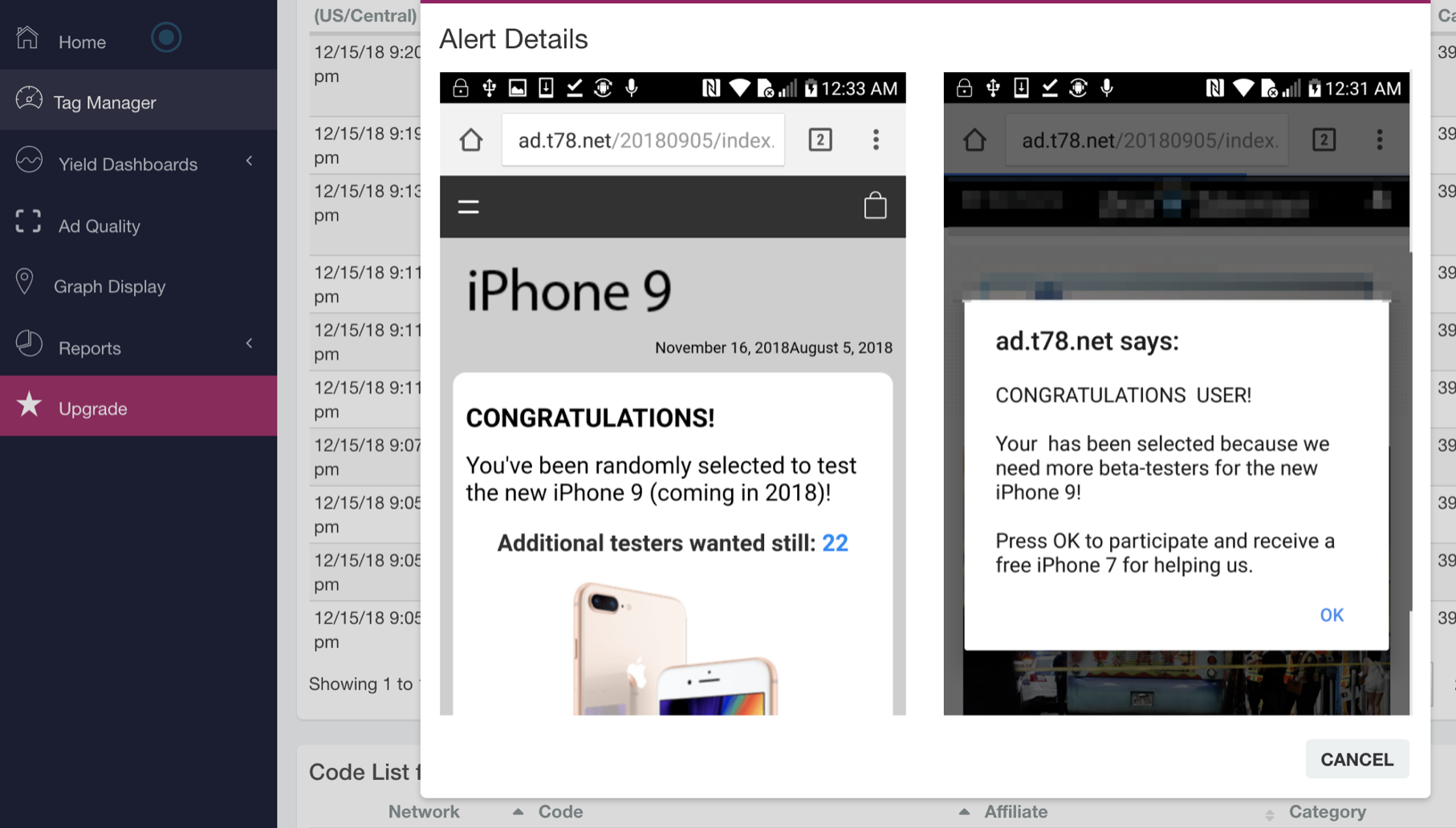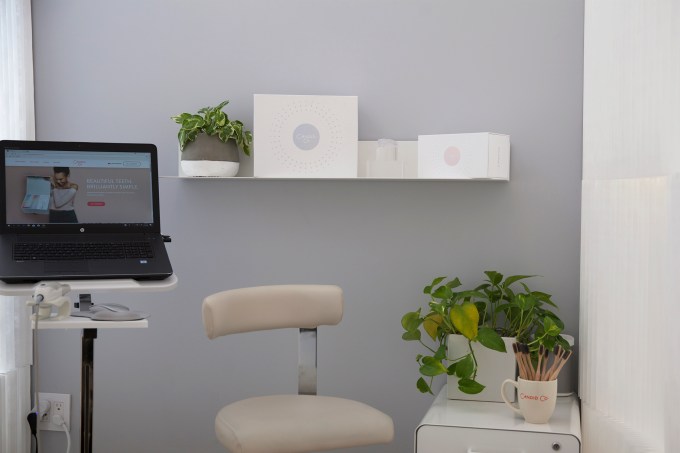If there was a word that dominated startup and tech news coverage this year, it was SoftBank. The Japanese telecom conglomerate’s Vision Fund pushed out a prodigious amount of capital this year — quite literally billions of dollars — into companies as diverse as a molecular manufacturer (Zymergen) and a robotic pizza delivery business (Zume Pizza). It was a year of highs as its Flipkart transaction produced billions in returns, as well as a year of incredible lows, what with the crisis over Saudi Arabia’s murder of Jamal Khashoggi. Saudi Arabia is the largest investor in the Vision Fund.
But the Vision Fund is only part of the SoftBank story this year. The company’s mobile unit started trading today on the Tokyo Stock Exchange (ticker: 9434), the second largest IPO of all time after Alibaba, raising $23.6 billion. But after weeks of pushing the stock to Japanese retail stock investors, those same consumers dumped the stock upon its debut, dropping by 15% from its debut at ¥1,463 to its close at ¥1,282. That’s the second worst IPO performance this decade for a Japanese company.
Highs and lows come with any ambitious project, and certainly for Masayoshi Son, the founder and chairman of SoftBank Group, nothing — not even piles of debt — will stand in his way.
Today, Arman and I wanted to look back at SoftBank’s year, and so we’ve compiled ten areas for analysis around the group’s telco business, its Vision Fund, and its other major investments (Sprint, Nvidia, Arm, and Alibaba).
SoftBank: The Telecom
1. Its IPO did what it had to do (raising money), but bad early performance will be a challenge for 2019
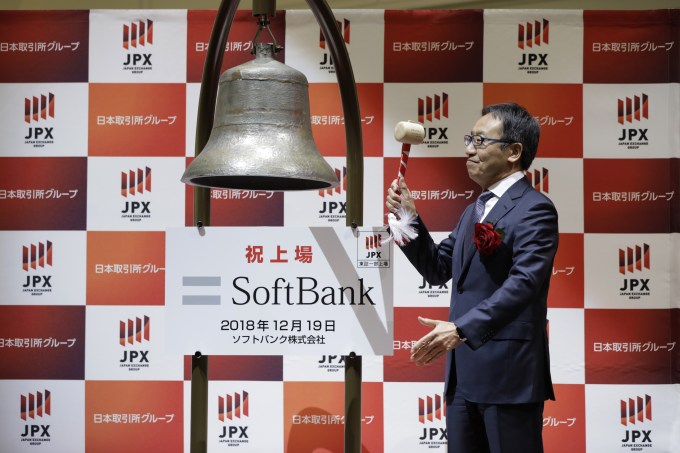
Ken Miyauchi, president and chief executive officer of SoftBank Corp., strikes the trading bell during the company’s listing ceremony at the Tokyo Stock Exchange (TSE) in Tokyo, Japan, on Wednesday, Dec. 19, 2018. Kiyoshi Ota/Bloomberg via Getty Images
At its core, SoftBank Group is fundamentally a telecom, and the third-largest player in the Japanese market. Masayoshi Son has for years wanted to transform SoftBank from a mature telco player into a leading investment house for funding the next-generation of technology companies.
There’s just one problem: SoftBank is sitting on piles of debt. As Arman and I wrote about a few weeks ago:
The bigger number though is sitting on the liabilities side of the company’s balance sheet. As of the end of September, SoftBank had around 18 trillion yen, or about $158.8 billion of current and non-current interest-bearing debt. That’s more than six times the amount the company earns on an operating basis, and just slightly less than the public debt held by Pakistan.
And though SoftBank’s sky-high debt balance tends to be a secondary focus in the company’s media coverage, it’s a figure that SoftBank’s top brass is well aware of, and quite comfortable with. When discussing the company’s financial strategy, Softbank CFO Yoshimitsu Goto stated that the company is in the early stages of a transition from a telco holding company to an investment company, and as a result is “likely to be perceived as a corporate group with significant debt and interest payment burden” with what is “generally considered a high level of debt.”
Those debt loads have made corporate maneuvering quite complicated. And so the company decided to put its mobile telco unit up for public trading as a means of getting a fresh injection of capital and continue its transformation into an investment shop. By raising $23.6 billion today, the company did just that.
The 15% drop in value on its debut though shows that the market has yet to fully buy into Son’s vision for where SoftBank is heading. That lowered price will make the corporate financial math around debt tougher, and will be a key theme for 2019.
2. The Japanese government wants to increase competition in the telco space, putting massive pressure on SoftBank’s financials

Japanese Prime Minister Shinzo Abe. Photo by Matt Roberts/Getty Images
Japan’s telco market is quite dormant, with mature, oligopolistic companies charging some of the highest prices on the planet for mobile service. Japan’s government also doesn’t auction off spectrum, which has saved telcos billions of dollars in direct cash costs, helping them to become reliable profit-generating juggernauts.
That cozy world is being shattered by the policy of Japanese prime minister Shinzo Abe, who has made increasing competition in the industry a major policy initiative. That includes putting 5G spectrum up for what will essentially be a competitive auction, demanding lower prices from telcos, and opening the market to new entrants like Rakuten (see #3 below).
As a result, incumbents like NTT DoCoMo have announced rate cuts of up to 40 percent on mobile services, while warning investors that it may take five years for the company to return to current profitability. Those announcements caused stock traders to dump Japanese telco shares this year, shedding $34 billion in the days following the announcements.
At a time when SoftBank most needs its cash flow to pay off its debt, the world is rapidly moving against it. The company has insisted that it can keep revenues and profits stable and even grow into the competition, but the announcements from its larger competitors dump cold water on its claims. SoftBank’s profits surged in its last quarter, but mostly from its Vision Fund investments rather than its core telco business.
3. Rakuten’s entrance into the Japanese mobile service market will scramble the traditional three-way oligopoly
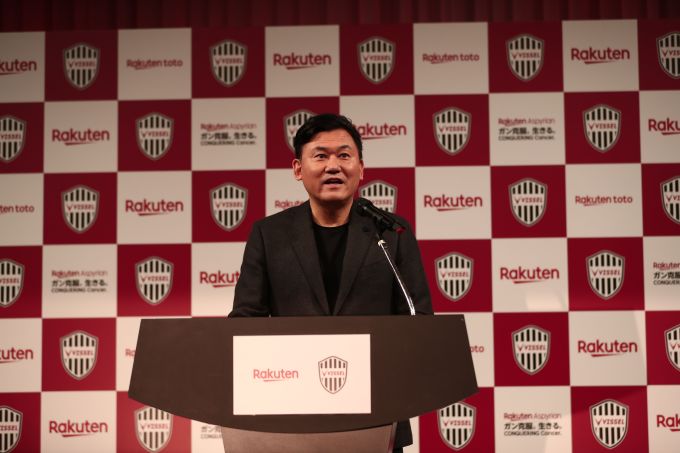
Hiroshi Mikitani, owner of Rakuten. BEHROUZ MEHRI/AFP/Getty Images
One of the big news stories for SoftBank came from ecommerce giant Rakuten, which announced that it will launch a new mobile service in Japan starting as early as next year. As Arman and I wrote about at the time:
Though a new entrant hasn’t been approved to enter the telco market since eAccess in 2007, Rakuten has already gotten the thumbs up to start operations in 2019. The government also instituted regulations that would make the new kid in town more competitive, such as banning telcos from limiting device portability.
Rakuten’s partnerships with key utilities and infrastructure players will also allow it to build out its network quickly, including one with Japan’s second largest mobile service provider, KDDI.
Rakuten has obvious built-in advantages as the second largest ecommerce company in Japan following Amazon, and that will put pressure on other incumbents — including SoftBank — to meet its prices or to compete with more marketing dollars to reach customers. Again, we see a tough road ahead for SoftBank’s telecom business at a very vulnerable time for its balance sheet.
SoftBank: The Vision Fund
4. The Vision Fund actually got bigger this year
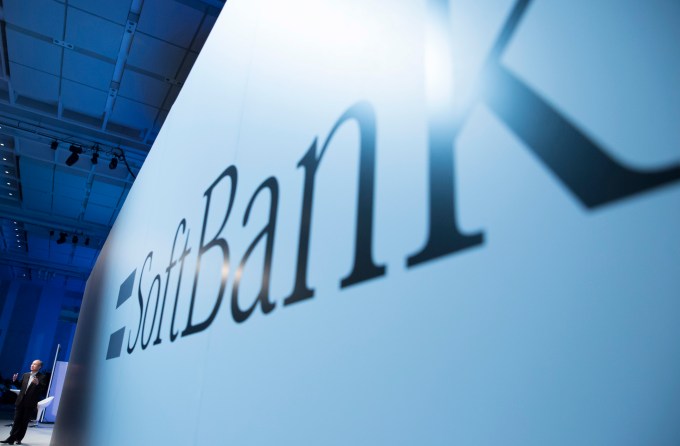
Photo by Tomohiro Ohsumi/Getty Images
The Vision Fund’s massive vision got just a bit bigger this year. When the fund announced its first close in May 2017, it set a target final fund size of $93 billion. In 2018 though, the Vision Fund received another $5 billion in commitments. When we add the $6 billion already committed for SoftBank’s Delta Fund, which is a separate vehicle used to alleviate conflicts around the company’s Didi investment, Masayoshi Son now has more than a $100 billion at his disposal.
But that’s not all! The Vision Fund has also been rumored to be raising $4 billion in debt so that it can fund startups faster (picking up on that debt theme yet?). Its LPs, which include Saudi Arabia, Abu Dhabi, and Apple, are given time to fund their commitments to the Vision Fund, and so the fund wants to have cash in the bank so that it can fund its investments faster. Debt structures in the fund are complicated, to say the least.
Masayoshi Son has repeatedly said that he wants to raise a $300 billion Vision Fund II, possibly as soon as next year, eventually ramping to $880 billion in the coming years. Whether the company’s debt load and controversy over Saudi Arabia (see #6 below) will allow that vision to come to pass is going to be a major question for 2019.
5. Seriously: is there any company not getting a multi-hundred million dollar term sheet from SoftBank these days?
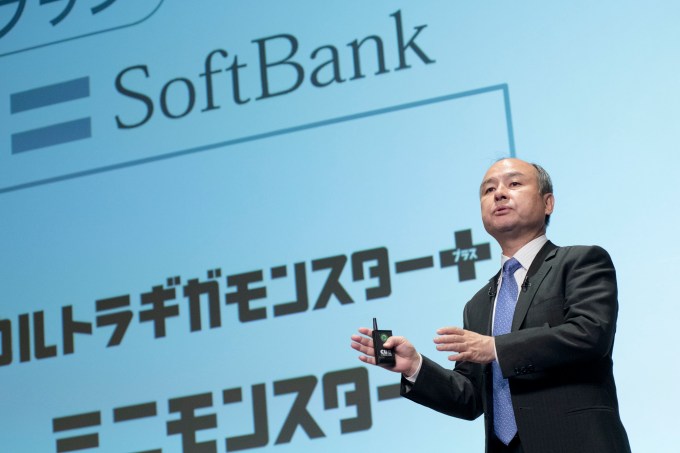
Photo by Alessandro Di Ciommo/NurPhoto via Getty Images
SoftBank dominated headlines throughout 2018 with a steady cadence of monster investments across geographies and industries. Based on data from regulatory filings, Pitchbook, and Crunchbase, SoftBank and its Vision Fund led roughly 35 investment rounds, with total round sizes aggregating to roughly $30 billion, or over $40 billion when including investments in Uber and Grab, which were announced in 2017 but didn’t close until early 2018.
Surprisingly, SoftBank’s latest filings indicate that as of the end of September, the Vision Fund had only deployed roughly $33 billion, or about one-third the total fund, though the actual number might be quite a bit larger. SoftBank has led twelve rounds since September, including buying a $3 billion dollar warrant for WeWork and finalizing a large round that included secondary shares into Chinese news aggregator ByteDance.
In addition to investing directly through its Vision Fund, SoftBank also regularly makes and holds investments at the group level, with the intention of selling or transferring shares to the Vision Fund at a later date. As a result, SoftBank currently holds around $27.7 billion in investments that sit outside the Vision Fund, including the company’s stakes in Uber, Grab and Ola which it expects to eventually transfer to the Vision Fund pending LP and regulatory approvals. Assuming it plans to move the majority of these investments to the Vision Fund, SoftBank might have already deployed close to half the fund.
For all of that money flowing out the door though, there are limits even to the Vision Fund’s ambitions. Just today, the Wall Street Journal reported that LPs are pushing back against a plan to buy out a majority of WeWork, which would push the Vision Fund’s investment in the co-working startup to $24 billion. From the article:
Some of the people said that [Saudi Arabia’s] PIF and [Abu Dhabi’s] Mubadala have questioned the wisdom of doubling down on WeWork, and have cast doubt on its rich valuation. The company is on track to lose around $2 billion this year, and the funds have expressed concern that WeWork’s model could leave it exposed if the economy turns, some of the people said.
If the investment went through, WeWork would represent roughly a quarter of the fund’s capital, an astonishing level of concentration for a venture fund. Its a bold, concentrated bet, exactly the kind of model that entices Son.
6. The Vision Fund generated its first massive returns with Flipkart, Guardant and Ping An, with a huge roster to come

Photo by AFP/Getty Images
In just the first full year of operations, the Vision Fund has already begun to see the fruits of its investments with several portfolio company exits.
It made a spectacular return on Indian ecommerce startup Flipkart, where SoftBank realized a $1.5 billion gain on its $2.5 billion investment in just about a year. Walmart, which bought a 77% stake in Flipkart as part of its ambitious overseas strategy, valued the company at $21 billion.
Flipkart may have been the year’s largest highlight for the Vision Fund, but it wasn’t the only liquidity the fund saw. Its pre-IPO investment in Ping An Health & Technology Co, which produces the popular Chinese medical app Good Doctor, debuted on the Hong Kong Stock Exchange, and Guardant Health, which makes blood tests for disease detection, went public in October to rabid investor enthusiasm.
While those early wins are positive signs, the proof of the Vision Fund’s thesis will come early next year, when companies like Uber, Slack and Didi are expected to go public. If the returns prove favorable, then the fundraise for Vision Fund II may well come together quickly. But if the markets turn south and complicate the roadshows for these unicorns, it could complicate the story of how the Vision Fund exits out of these high-flying investments.
7. Murder is wrong. That makes the math for SoftBank really hard.

JIM WATSON/AFP/Getty Images
The tech media world went into a frenzy over Saudi Arabia’s horrific and horrifically public killing of dissident journalist Jamal Khashoggi. That put enormous pressure on SoftBank and its Vision Fund, where Saudi Arabia’s Public Investment Fund (PIF) is the largest LP with a $45 billion commitment.
There have been strong calls for Masayoshi Son to avoid Saudi Arabia in future fundraises, but that is complicated for one simple reason: there are just not that many money managers in the world who can a) invest tens of billions of dollars into firms backing risky technology investments, and b) are willing to ignore SoftBank’s massive debt stack and existential risks.
So SoftBank faces a tough choice. It can have its fund, but will need to get money from unsavory people. That might be fine — after all, Saudi Arabia is also the largest investor in Silicon Valley. Or it can walk away and try to find another LP that might replace the Kingdom’s huge fund commitment.
If the Vision Fund’s numbers look good after the early IPOs in 2019, I can imagine it being able to paper around Saudi Arabia’s commitment with a broader set of LPs that might be intrigued with technology investing and trust the numbers a bit more. If the IPOs stall though, whether because of internal company challenges à la pre-Dara Uber or broader market challenges, then expect a next fundraise to feature Saudi Arabia prominently, or for no fundraise to take place at all.
SoftBank: The Other Stuff
8. Good news on SoftBank’s Sprint side with its merger with T-Mobile looking like it will move forward

CEO of T-Mobile US Inc. John Legere and Executive Chairman of Sprint Corporation Marcelo Claure. Photo by Alex Wong/Getty Images
Since SoftBank acquired Sprint for $20 billion back in 2013, Sprint’s heavy debt balance has led to lackluster performance and the downgrade of SoftBank’s credit ratings to junk, where they’ve remained since.
After initial discussions stalled in 2017, SoftBank reinitiated merger discussions with T-Mobile’s German parent, Deutsche Telekom in 2018, eventually reaching an agreement for a Sprint/T-Mobile merger that would see SoftBank’s ownership stake fall from just over 80% of Sprint to just 27% of the combined entity.
Despite the poor track record for telco deal approvals and the increased scrutiny of cross-border M&A from U.S. regulators, SoftBank’s proposed merger recently received key approvals from the Committee on Foreign Investment in the United States (CFIUS), the Department of Justice, the Department of Homeland Security, and the Department of Defense. Part of that agreement came when SoftBank agreed to eliminate Huawei equipment from its infrastructure. While the deal still needs approval from the Federal Communications Commission, the road forward seems to be relatively clear.
If the deal ultimately goes through, SoftBank will no longer have to consolidate Sprint financials with its own and can instead report only its owned share of Sprint financials (and debt expense), improving (at least the optics of) SoftBank’s balance sheet.
9. SoftBank’s massive bet on Nvidia could be a $3 billion winner even as Nvidia faces crash
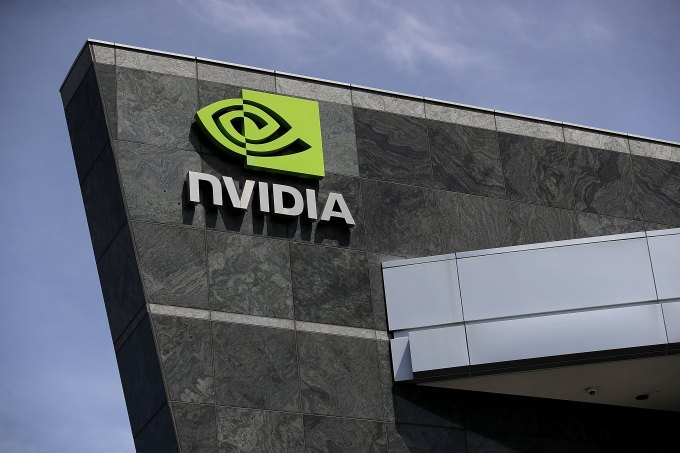
Justin Sullivan/Getty Images
SoftBank became Nvidia’s fourth largest shareholder in 2017 after building up a roughly $4 billion stake in the company’s shares. As I detailed last week, Nvidia’s stock has gone into free fall over the past two months, as the company faces geopolitical turmoil, the loss of a huge revenue stream with the collapse in crypto, and an increasingly competitive battle in the next-generation application workflow space.
Now, SoftBank is reportedly looking to sell its Nvidia shares for possible profits of around $3 billion. As Bloomberg reported, that’s because the acquisition was built as a “collar trade” that protected SoftBank against a drop in Nvidia’s share price (a good reminder that even when a stock loses half of its value, it is entirely possible for people to still make money).
The opportunity though is that SoftBank almost certainly still wants to continue to play in the next-generation AI chip space, and needs to find another vehicle for it to hitch a ride on.
10. ARM could be the saving grace of chips for SoftBank
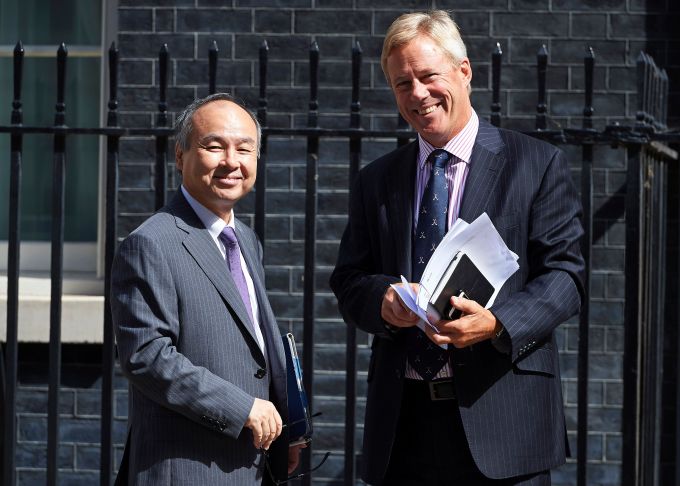
Masayoshi Son, CEO of Japanese mobile giant SoftBank, and Stuart Chambers, Chairman of British chip designer company ARM Holdings, are pictured outside 11 Downing street in central London. NIKLAS HALLE’N/AFP/Getty Images
In 2016, SoftBank made its biggest purchase ever when it acquired system-on-a-chip designer ARM Holdings for $32 billion. ARM’s designs were dominant among smartphones, which at the time was seeing rapid adoption and growth worldwide.
The good news hasn’t stopped since, although ARM has had to pivot its strategy in 2018 to adapt to changing market dynamics. Apple, which has seen its next-generation iPhone sales stalling, has been rumored to be moving to using ARM chips for a wider array of its products, including its Mac lineup. Beyond that expansion, ARM is now increasingly designing chips for the data center, and engaging in next-generation markets around artificial intelligence and automotive. ARM’s CEO has said that he sees a path to doubling revenues by 2022, which shows a healthy clip of growth if that pans out.
There are headwinds though. Consolidation in the semiconductor space has been a theme the past two years, and that will allow the surviving companies to be more ferocious competitors against ARM. Up-and-coming startups could also crimp the company’s growth in next-generation workloads, a risk shared with other incumbents like Nvidia.
That said, ARM seems to be in a much more strategic position than Nvidia these days, as ARM has managed to maintain its linchpin role, and that should ultimately roll up to a valuation that SoftBank will be excited about.
11. Alibaba is putting heavy pressure on SoftBank’s balance sheet
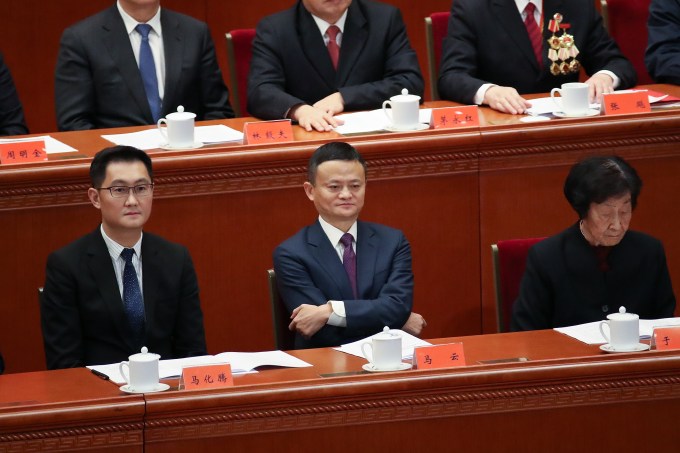
Jack Ma, businessman and founder of Alibaba, at the 40th Anniversary of Reform and Opening Up at The Great Hall Of The People on December 18, 2018 in Beijing, China. (Photo by Andrea Verdelli/Getty Images)
While SoftBank has slowly been cashing in after winning big on its early backing of Alibaba, the company’s ownership stake still sits at roughly 29%.
SoftBank’s Alibaba ties have helped the company fuel its incessant appetite for leverage, with SoftBank using its stake in Alibaba as collateral for an $8 billion off-balance sheet loan, which prevented additional downgrades of Softbank’s credit. But a tougher macro backdrop and slowing sales growth have caused Alibaba to follow the precipitous decline of other Chinese tech stocks in 2018, falling nearly 20% year-to-date and 30% in the last 6 months.
That decline means tens of billions of dollars of losses for SoftBank’s already overstretched balance sheet, and as with many of these stories, will make financing its vision challenging in 2019.
And so we get back to the core theme of 2018 for SoftBank: debt, leverage, and financial wizardry in pursuit of a bold transformation into a technology investment firm. That transformation has certainly not been smooth, but it has moved forward bit by bit. If SoftBank can navigate the changes in the Japanese telco market, exit some major investments in its Vision Fund, and manage its big commitments in Sprint and Alibaba, it will reach its destination, with a few ultimately superficial bruises along the way.

